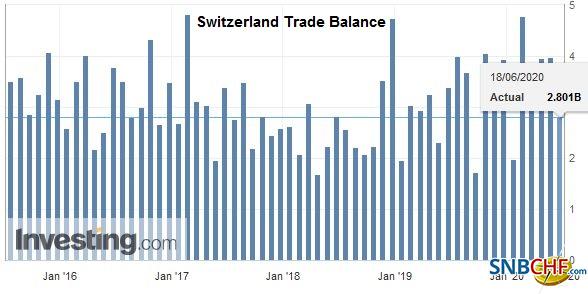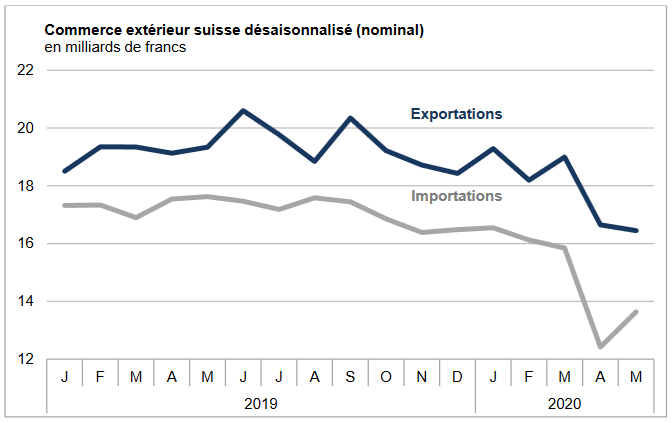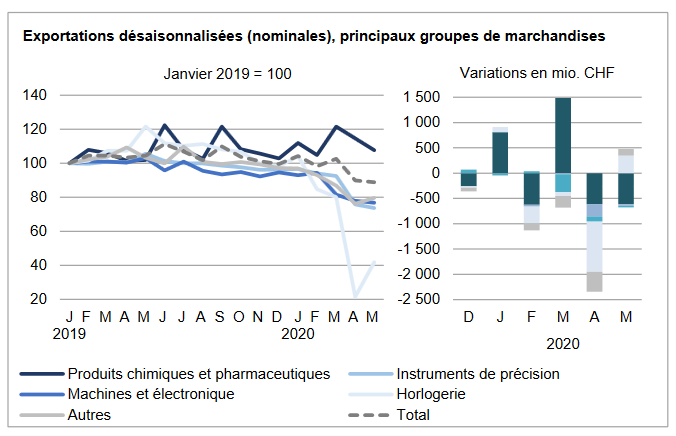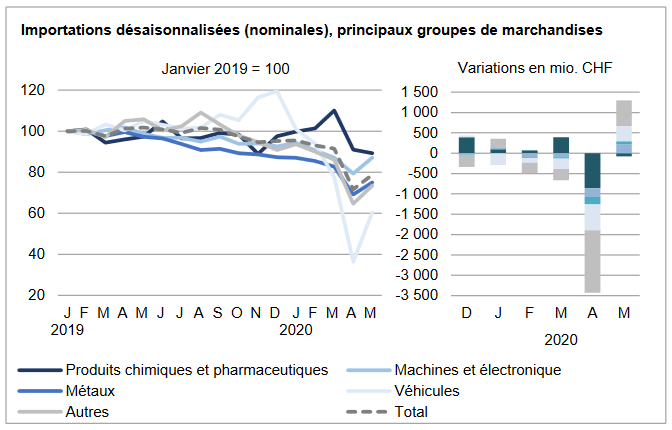We do not like Purchasing Power or Real Effective Exchange Rate (REER) as measurement for currencies. For us, the trade balance decides if a currency is overvalued. Only the trade balance can express productivity gains, while the REER assumes constant productivity in comparison to trade partners. Who has read Michael Pettis, knows that a rising trade surplus may also be caused by a higher savings rate while the trade partners decided to spend more. This is partially true. Recently Europeans started to increase their savings rate, while Americans reduced it. This has led to a rising trade and current surplus for the Europeans. But also to a massive Swiss trade surplus with the United States, that lifted Switzerland on the U.S. currency manipulation watch list. To
Topics:
George Dorgan considers the following as important: 2.) Trade Balance News Service Bunt [FR], 2) Swiss and European Macro, Featured, newsletter, Switzerland Exports, Switzerland Exports by Sector, Switzerland Imports, Switzerland Imports by Sector, Switzerland Trade Balance
This could be interesting, too:
Nachrichten Ticker - www.finanzen.ch writes Die Performance der Kryptowährungen in KW 9: Das hat sich bei Bitcoin, Ether & Co. getan
Nachrichten Ticker - www.finanzen.ch writes Wer verbirgt sich hinter der Ethereum-Technologie?
Martin Hartmann writes Eine Analyse nach den Lehren von Milton Friedman
Marc Chandler writes March 2025 Monthly
We do not like Purchasing Power or Real Effective Exchange Rate (REER) as measurement for currencies. For us, the trade balance decides if a currency is overvalued. Only the trade balance can express productivity gains, while the REER assumes constant productivity in comparison to trade partners.
Who has read Michael Pettis, knows that a rising trade surplus may also be caused by a higher savings rate while the trade partners decided to spend more. This is partially true. Recently Europeans started to increase their savings rate, while Americans reduced it. This has led to a rising trade and current surplus for the Europeans. But also to a massive Swiss trade surplus with the United States, that lifted Switzerland on the U.S. currency manipulation watch list.
To control the trade balance against this “savings effect”, economists may look at imports. When imports are rising at the same pace as GDP or consumption, then there is no such “savings effect”.
After the record trade surpluses, the Swiss economy may have turned around: consumption and imports are finally rising more than in 2015 and early 2016. In March the trade surplus got bigger again, still shy of the records in 2016.
Swiss National Bank wants to keep non-profitable sectors alive
Swiss exports are moving more and more toward higher value sectors: away from watches, jewelry and manufacturing towards chemicals and pharmaceuticals. With currency interventions, the SNB is trying to keep sectors alive, that would not survive without interventions.
At the same time, importers keep the currency gains of imported goods and return little to the consumer. This tendency is accentuated by the SNB, that makes the franc weaker.
Texts and Charts from the Swiss customs data release (translated from French).
Exports and Imports YoY DevelopmentAfter its historic setback of the previous month, foreign trade recovered a few colors in May 2020. Imports posted a seasonally adjusted increase of 9.8% to 13.6 billion francs; however, they are still below their March 2020 level. Although exports fell again (-1.2%), they eased compared to April. The trade balance closed with a surplus of 2.8 billion francs. In short ▲ Increase in trade with Europe ▲ Watchmaking: exports have doubled, but remain at a low level ▼ Chemistry-pharma: decline in both directions of traffic |
Swiss exports and imports, seasonally adjusted (in bn CHF), May 2020(see more posts on Switzerland Exports, Switzerland Imports, ) |
Global evolutionIn May 2020, exports registered a further decline (-1.2%; real: -0.2%), which however was less virulent than the previous month. Exports contracted from 201 million francs to 16.4 billion francs. For their part, imports rebounded clearly after their historic plunge of the previous month. They indeed increased by 9.8% (+1.2 billion francs; real: + 13.0%), however, settling at a level (13.6 billion francs) still significantly lower than that of March 2020 The trade balance closed with a surplus of 2.8 billion francs. |
Switzerland Trade Balance, May 2020(see more posts on Switzerland Trade Balance, ) Source: investing.com - Click to enlarge |
Third consecutive monthly decline in exports to Asia
In May 2020, the three main export sectors, namely chemicals and pharmaceuticals, machinery and electronics and precision instruments, fell again. Chemicals and pharmaceuticals (immunological products: -688 million francs) weighed the most on the result. Since the start of the year, their exports have stagnated. The machine and electronics sectors as well as precision instruments continued to develop negatively, albeit at a slower pace compared to the previous month (respectively -31 and -30 million francs). Watchmaking exports doubled in one month (+345 million), nevertheless showing a level half of that of March. Metals also rebounded (+12 million; other merchandise group), but more timidly than watchmaking. Among the three largest drainage markets, only Europe (+ 2.7%) experienced growth. This was mainly based on the boom in sales to Germany (+205 million francs), Italy and France still posting red figures (-156 and -90 million respectively). Exports to North America weakened further, however more moderately (-3.3%; USA: -93 million). The Asian continent suffered its third consecutive contraction (-13.9%). This mainly results from the setbacks of China, Japan and Singapore (-337 million in total). |
Swiss Exports per Sector May 2020 vs. 2019(see more posts on Switzerland Exports, Switzerland Exports by Sector, ) |
Imports: broadly sustained rebound
On the import side, ten of the top twelve commodity groups posted increases. Three sectors alone generated three quarters of the growth (+1.2 billion francs). Vehicle imports increased for the first time in four months (+374 million francs; passenger cars: +215 million). Machinery and electronics were also on the rise (+216 million), returning to their March 2020 level. With a jump of a third or 302 million francs, the textiles, clothing and footwear sector posted higher growth in the previous month. Chemicals and pharmaceuticals fell further (-77 million), but were more tenuous than in April. This drop is explained by the decline in raw materials and basic materials (-96 million). Entry growth took root in Europe (+ 11.6%) and Asia (+ 13.2%). After the fall of the previous month, imports from our four neighboring countries increased, on a cumulative basis, by 781 million francs. Spain also shone (+112 million francs). Arrivals from Asia have returned to their level at the start of the year. China stood out with a boom of 188 million francs, reaching a new monthly peak at 1.6 billion francs. Viet Nam has doubled its deliveries over a month (+122 million; gold ornaments for redesign). North America recorded a new setback (-12.4%; USA: -84 million). |
Swiss Imports per Sector May 2020 vs. 2019(see more posts on Switzerland Imports, Switzerland Imports by Sector, ) |
Tags: Featured,newsletter,Switzerland Exports,Switzerland Exports by Sector,Switzerland Imports,Switzerland Imports by Sector,Switzerland Trade Balance











